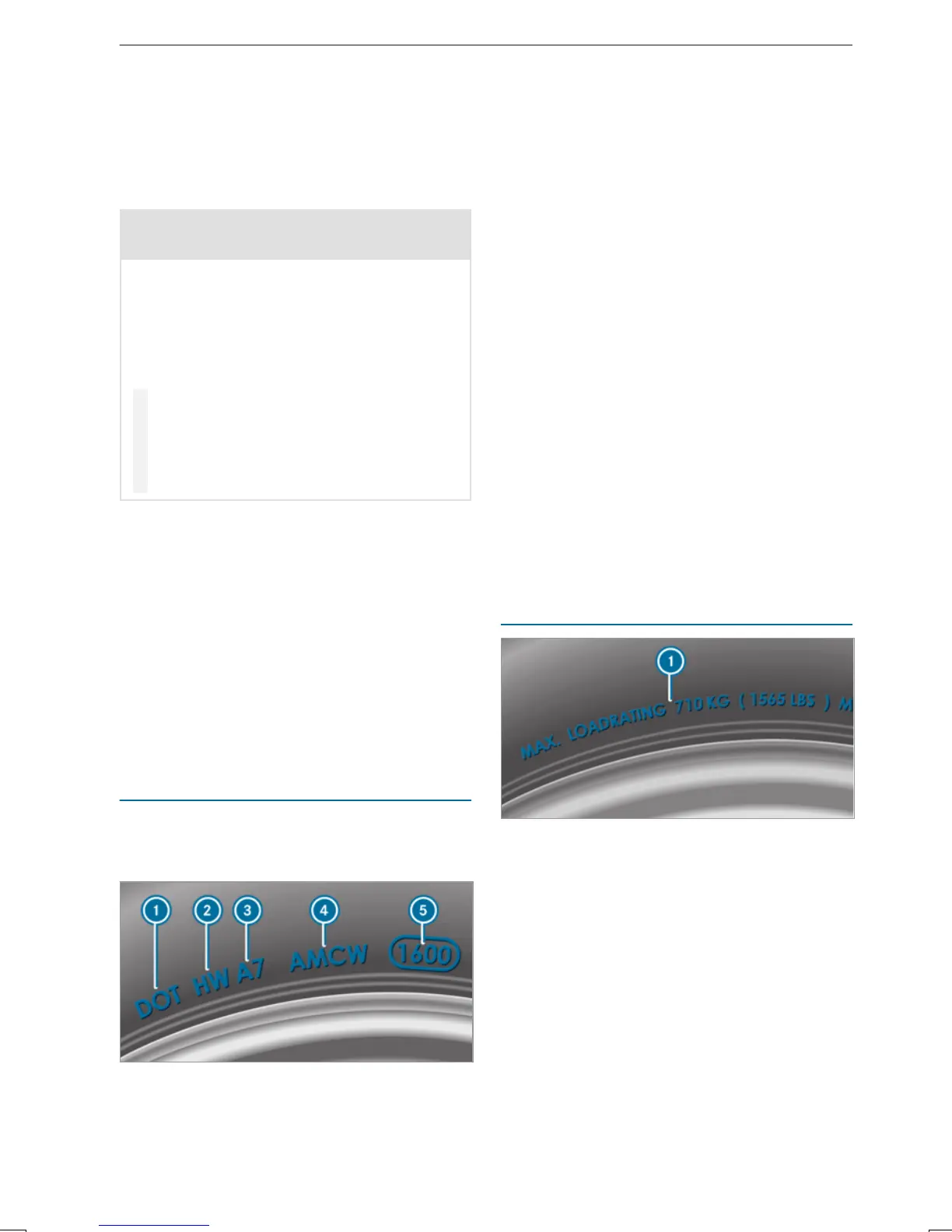tire's ability to come to astandstill on awet pave‐
ment under controlledconditions on aspecified
U.S. government test surface madefromasphalt
and concrete.
Temperaturegrade
&
WARNING Risk of accident from tire
overheating and tirefailure
The temperaturegrade forthis tireisestab‐
lished foratirethat is properly inflated and
notoverloaded. Excessivespeed, underinfla‐
tion, or excessiveloading, either separatelyor
in combination, can cause excessiveheat
build-up and possible tirefailure.
#
Observe therecommended tirepres‐
sures and regularly checkthe tirepres‐
sureofall tires including thespare
wheel.
#
Adjustthe tirepressureasnecessary.
The temperaturegrades areA(highestgrade), B
and C. These relatetoatire's resistance to heat
and its ability to release heat on aspecified test
wheel in laboratorytests under controlled condi‐
tions. Sustained high temperatures can cause the
material of thetiretodegenerateand reduce tire
life. In addition, excessivelyhigh temperatures
can lead to sudden tirefailure. Grade Crefersto
aperformancewhichall passenger vehicle tires
mustexhibit, accordingtothe U.S. Department
of Transportation's requirements.
Information on DOTand TIN (TireIdentifica‐
tion Number)
U.S. tireregulations indicatethat everytireman‐
ufacturer or retreadermustimprint aTIN in or on
thesidewall of eachtireproduced.
%
The datashown in theillustration is sample
data.
The TIN is aunique identification number fortires
and consists of thefollowing components:
R
DOT(Department of Transportation): tire
symbol 1 indicates that thetirecomplies
withthe requirements of theU.S. Department
of Transportation.
R
Manufacturer identification code: manu‐
facturer identification code 2 provides infor‐
mationabout thetiremanufacturer.New tires
have acodewithtwo symbols. Retreaded
tires have acodewithfour symbols.For fur‐
ther information about retreadedtires, see
(/ page 310).
R
Tire size: identifier 3 describes thetiresize.
R
Tire type code: tire typecode 4 can be
used by themanufacturer as acode to
describe specific characteristicsofthe tire.
R
Dateofmanufacture: date of manufacture
5 provides informationabout theage of a
tire. The 1stand 2nd numbersindicatethe
calendar week and the3rd and 4thnumbers
indicatethe year of manufacture(e.g. "3208"
refers to the32ndweek of theyear 2008).
Information on maximum tireload
%
The datashown in theillustration is sample
data.
Maximum tireload 1 is themaximum permissi‐
ble weight forwhichthe tireisapproved.
Do notoverload thetires by exceeding themaxi‐
mum permissible load. The maximum permissible
load can be found on thevehicle's Tire and Load‐
ing Informationplacardonthe B-pillar on thedriv‐
er's side (/ page302).
306
Wheels and tires

